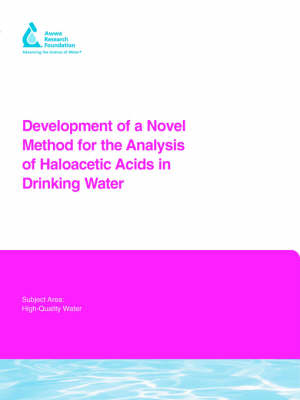The main objective of this research was to develop a new approach for HAA analysis that was accurate, reproducible, sufficiently sensitive, and relatively safe and simple to perform. This method involved the use a CE ion analyzer for separation and detection of HAAs. Preliminary results from our laboratory using distilled and deionized water spiked with HAAs indicated that this approach was capable of separating and detecting all nine chlorinated and brominated HAAs. The method detection limit (MDL) for monochloroacetic acid measured in our laboratory was 32 ppb using a bubble cell without any sample pretreatment (i.e. direct aqueous sample injection). Given this unacceptably high MDL, more work was needed to fully develop and test the CE-based method especially with regard to improving method sensitivity. Originally published by AwwaRF for its subscribers in 2004. This publication can also be purchased and downloaded via Pay Per View on Water Intelligence Online - click on the Pay Per View icon below
- ISBN10 1843399067
- ISBN13 9781843399063
- Publish Date 31 May 2005
- Publish Status Out of Print
- Out of Print 2 March 2017
- Publish Country GB
- Imprint IWA Publishing
- Format Paperback
- Pages 104
- Language English
